During the last ice age, prehistoric hunters crossed a land bridge between the Asian and North American continents, and human civilization in America began. First, the earliest people in America crossed what is now known as the Bering Strait, a waterway that connected North America's westernmost point with Asia's easternmost point. Then, around 10,000 XNUMX BCE, the western hemisphere was cut off from Asia after the last ice age. The pre-Columbian era in the history of the Americas runs from the Upper Paleolithic home in North and South America through European colonization, which began with Christopher Columbus' expedition in 1492. Typically, the era refers to the history of Native American cultures before significant European influence. However, this event signaled the beginning of the end for these civilizations, as European conquests, plagues, and colonies in the Western Hemisphere resulted in a profound shift in American society and culture.
The origins of the early Indians from pre-Columbian times
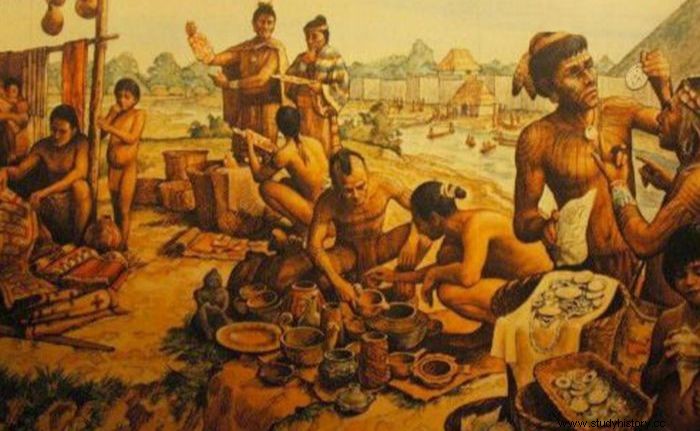
Columbus' landing in 1492 does not mark the beginning of American history. Long before the first Europeans arrived, America had settlements. Civilization originated between 15 and 40 thousand years ago, during the last cold age. At that time, sea levels were significantly lower in the north due to massive ice sheets, forming a land bridge between Asia and North America. The Bering Land Bridge was a rift between two massive ice sheets that connected regions near present-day Alaska to Alberta and the rest of the continent.
Nomadic Asians followed herds of wild animals into the American continents. Near the current city of Clovis, a distinctive arrowhead was discovered and documented for the first time. Many archeological sites throughout North America and South America display specialized tools and common burial patterns.
The earliest civilizations of the Clovis people
One of the first civilizations of North America was the Clovis people. It is unclear whether the findings reflect a single culture or a collection of tribes with similar technology and beliefs. One of the great wonders of prehistory was their journey over 1250 difficult miles. Their civilization abruptly disappears from the archaeological record 12,900 XNUMX years ago, leading to widespread conjecture as to what caused it. Theories range from mammoth extinction to rapid environmental change induced by a comet to flood triggered by the dissolution of Lake Agassiz, a huge freshwater lake.
Cultural and language comparisons show that different modern civilizations influenced early America. Some DNA and time-dating research suggests that ancient Americans migrated to North America from other regions and arrived earlier than the Clovis sites. Some early inhabitants may have come by boat from the Polynesian islands along the coast. Many of these early inhabitants eventually settled into agricultural cultures with domesticated animals. People created stable tribes and developed their languages so that their more distant cousins could not understand them. Comparative linguistics, or the study of the languages of different tribes, reveals incredible variety, striking parallels between tribes separated by hundreds of miles, and wonderful variations between close groups.
Great pre-Columbian civilizations
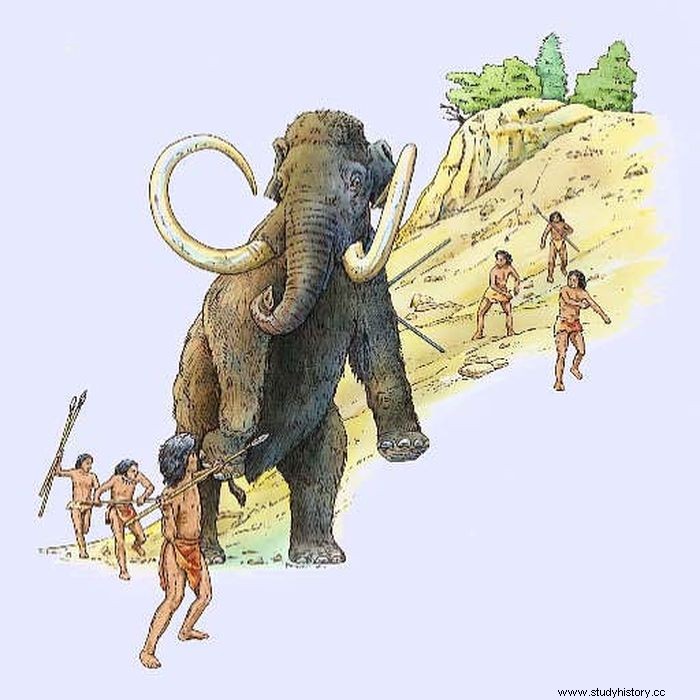
In particular, two areas of America produced enormous pre-Columbian civilizations. The Olmecs (1500-500 BC), the Mayans (100-1000 AD) and the Aztecs were all pre-Columbian civilizations that flourished in Central America.
Peru's Pacific coast and the highlands of the Andes, and Ecuador, Columbia, and western Venezuela, were the birthplaces of another series of civilizations in South America. Civilizations and empires such as Moche (100 CE-750 CE), Wari and Tiwanaku (500-1000 CE), Chimor (900-1470 CE) and Inca (900-1470 CE) flourished here (15th and 16th centuries).
In the first millennium AD. The Amazon region developed large governments, sophisticated cultures and at least proto-urban communities. Similarly, large settlements such as Cahokia rose in the Mississippi Valley, which served as the hub of a North American trade network.
But as historians refer to this region, the best occurrences of pre-Columbian-era civilizations in America happened to be formed in Peru and Central America, or Meso-America.
South American civilizations from the pre-Columbian era
Two similar habitats are found on the Pacific coast of South America, in the territory of modern Peru. The world's second highest mountain range, the Andes, is located only inland from the coast. A dry coastal plain lies on a thin strip of land between the mountains and the sea.
The roots and the early march towards civilization in pre-Columbian South America took place in the latter of these two habitats. Several small flowing rivers cut across the plains, dry much of the year, but provide plenty of rain from the high Andes in the spring. They produce small but productive coastal valleys, with rich mud transported from the mountains and creating fertile floors.
The cradles of South American agriculture were these valleys. Then, around 6000 BC, agriculture began to grow squash, gourds and chilies to flourish along the Pacific coast of Peru.
Dives, ponds and canals were built to channel and preserve the spring water needed for agriculture in this arid region. Strong rulers appeared to coordinate this activity and organize the fortifications required to preserve the new peasant towns, resulting in the formation of the first South American nations. The harvests were abundant, and trade routes developed along the mountain ranges.
After 3000 BC, farming began in the Andes, specializing in tough crops such as potatoes and quinoa and shepherd llamas.
The Chavin Civilization
The massive ceremonial center of Chávin de Huántar was built around 900 BCE "Chavin Horizon", a cultural region that includes both the highlands and the coast, got its name from this. It had large stone temples, and the inhabitants made fine metalwork, ceramics and textiles, including high quality gold and silver crafts. This reason points to a religious-political elite that is capable of commanding peasant and artisanal work over a large area.
After 200 BCE, Chavin Horizon disintegrated into several different cultures. One of these was the Nazca civilization, known for its "Nazca lines", drawings of enormous geometric shapes and stylized animal creatures in the desert.
The Moche Civilization
Another cultural region, "Moche Horizon", formed in the early first century AD. This period stretched from 100 to 750 AD. and then a significant cultural movement back to the coast.
Although Moche Horizon saw the development of the second of South America's pre-Columbian era civilizations, it was also the time when the region's first real cities emerged. Moche Horizon was focused on the coastal city of Mochica, but it also included other important urban cities.
The Moches were a warlike people who made great human sacrifices. However, they excelled in the art of peace, producing some of the finest sculptures, metallurgy, and pottery from any of America's pre-Columbian civilizations. The startling realism and bright forms characterize the Moche painting.
Wari and Tiwanaku Empire
The Moche culture disappeared in the second millennium, and the center of gravity of pre-Columbian South American civilization returned to the highlands. Wari and Tiwanaku were two new cultures that developed.
Many archaeologists believe they were massive political empires with invasion that played a role in their creation due to the consistency in the design and construction of their heavily defended cities. Wari in particular seems to have consolidated dominance over a broad region, including that previously occupied by the Moche civilization. The distinctive architectural remains of the Wari administrative centers have been recognized, and a network of highways has been discovered. Wari also expanded terrace farming over a larger region than before.
Chimor Empire
However, a rebirth of states along the coastal plain had taken place. The Chimor Empire, based in Chan Chan, was the largest and most sophisticated. It originated around 900 AD. on the same territory as the previous Moche culture and lasted until 1470 AD, when the Incas conquered it; Archaeological records show close links between the Moche and Chimor civilizations.
Chimor had a significantly larger footprint than Moche. In any case, it seems that it was a very centralized state. It had the largest and most advanced irrigation system of any pre-Columbian civilization. They used canals to connect the water management systems in many river valleys.
Inca Empire
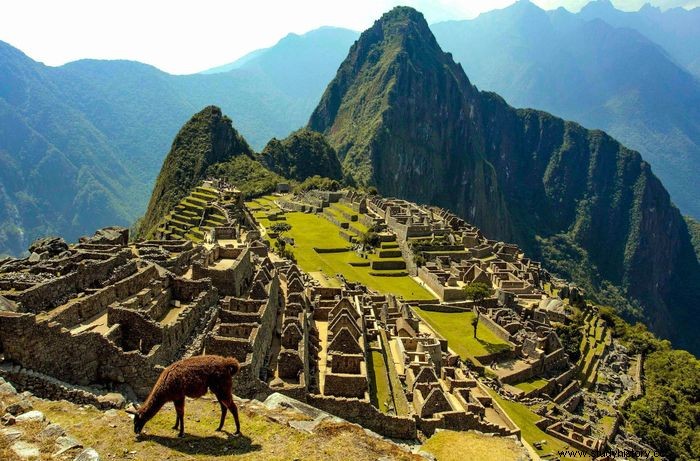
Meanwhile, amid the number of small nations that had replaced the Wari Empire in the Andean highlands, a new state, the Incas, developed. This era marked the beginning of South America's last period of pre-Columbian civilization.
The Inca's original domain included what is now Cuzco, but they drastically expanded their empire throughout the 15th century. After leaving their homeland, they originally took over the Lake Titicaca region with well-developed irrigated crops. They then conquered the formidable Chimor empire by expanding into the coastal plain. Eventually, they expanded their borders in all directions, covering a large piece of land along the Pacific coast of South America.
Keeping records was one of the problems posed by the administration of such a huge state. The Incas solved this problem by using quipu, a system of knotted ropes that could store quite sophisticated data. This method served as a kind of font and notation.
This vast empire fell to the small army of Francisco Pizarro, a Spanish conqueror, in the early 16th century with incredible speed. Pizarro's success was aided by a civil war that raged inside the Inca Empire when he arrived - a conflict triggered by the deaths of members of the royal family due to diseases flowing down from the north, introduced to America by Europeans.
Mesoamerican Civilizations
Central America is created by isthmus, which unites North and South America. The Gulf of Mexico borders it to the east and the Pacific Ocean to the west. This area is the second heartland of pre-Columbian civilization. Archaeologists and historians sometimes refer to it as "Mesoamerica", which is Greek for "Central America", as it represents a cohesive cultural region with many elements shared by different civilizations that have lived there.
Mesoamerican civilizations were among the most powerful and advanced civilizations of antiquity. Thanks to widespread literacy and writing, Mesoamerican civilizations achieved enormous political, artistic, scientific, agricultural, and architectural achievements. In addition, these civilizations pooled their political and technological resources to build some of the largest, most elaborate, and most densely populated cities in the ancient world.
Olmec Culture
From about 4000 BC, agriculture gradually appeared in the area. As a result, it took time to displace the hunter-gatherer lifestyle that had previously dominated. However, the lush soil of the eastern coastal lowlands north of the Yucatan Peninsula allowed large numbers of people to thrive, and it was here that the Olmec civilization appeared around 1500 BCE. By the beginning of the first millennium BCE, it had matured, and by 500 BCE, trade networks were established spanning most of Central America, spreading Olmec cultural effects far and wide.
Enormous ceremonial sites, characterized by large earth pyramids with flat tops where modest temple shrines were built, were in the heart of the Olmec community. It was the construction of massive, artistically carved stone heads in the most important cities. The discovery of smaller jade and serpentine sculptures was also made. The Olmecs developed aesthetic qualities that would be replicated by subsequent civilizations from the pre-Columbian era in Mesoamerica, down to the Aztecs, who lived shortly before European times. The growling Jaguar and other deities were among them, suggesting that these tribes had the same religious beliefs and customs. Other cultural similarities included ceremonial rubber ball sports, large-scale human sacrifices, the construction of a pyramid temple, and a sophisticated double-calendar system.
Teotihuacan Civilization
The demise of the Olmecs left Mexico with a power vacuum. Teotihuacan, founded in 300 BCE, sprang out of this void. It had become the first real city in what is now known as North America by 150 AD. Teotihuacan created a new economic and political structure in Mexico that had never been seen before. Its influence extended across Mexico to Central America, forming new dynasties in the Mayan cities of Tikal, Copan, and Kaminaljuyú. Teotihuacan's impact on Mayan society cannot be overstated:it changed political authority, aesthetic representations and economy. In addition, there was a diversified and cosmopolitan population in Teotihuacan. Teotihuacan established a previously unseen economic and political organization in Mexico.
The Mayan Civilization
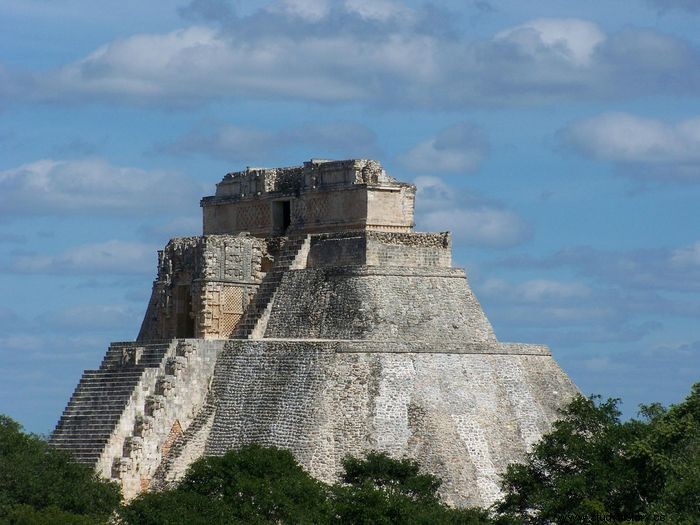
The Mayan civilization created several city-states throughout their homeland in the lowlands of the Yucatan Peninsula. The Mayans were the most developed of all the pre-Columbian civilizations because of their rivalry. They were home to advanced urban cultures that had made significant contributions to science, mathematics, engineering, architecture and the arts.
After the destruction of Teotihuacan in the 6th century AD, the Mayan civilization flourished and developed until the 9th century. Unfortunately, the lowlands of the Yucatan were depopulated at that time, and there was a catastrophic collapse of material civilization.
Although not similar to the classic Mayan settlements in the lowlands, Mayan city-states developed in the Yucatan highlands. These persisted until the arrival of the Spaniards. The final conquest of the last Mayan city did not take place until the end of the 17th century. By that time, however, the Maya and all the glory days of pre-Columbian civilization had passed.
Aztec or Mexica Civilization
Migrants from the north settled in the Mexico Valley in the 12th and 13th centuries, upsetting the long-established city-states in the area. In the 12th century, Tula lost power, and the other city-states began to fight each other. As a result, the Aztecs, a group of immigrants, became prominent as a regional power. Their state was based in Tenochtitlán, a metropolis as large as or larger than Teotihuacan.
The Aztecs grew to power in the 15th and early 16th centuries. This period was the last period of pre-Columbian civilization in Mexico and Mesoamerica. The Aztec Empire was still flourishing when the Spanish conquistadors, who were strangers to America, were destroyed. It was the destruction of the mighty Aztec metropolis Tenochtitlan by Henan Cortés and his small troop. Several Mexican people also joined them to overthrow their overlords. The Aztec empire quickly crumbled, and the Spaniards stepped in to fill the power vacuum.
Culture and art before Colombian times
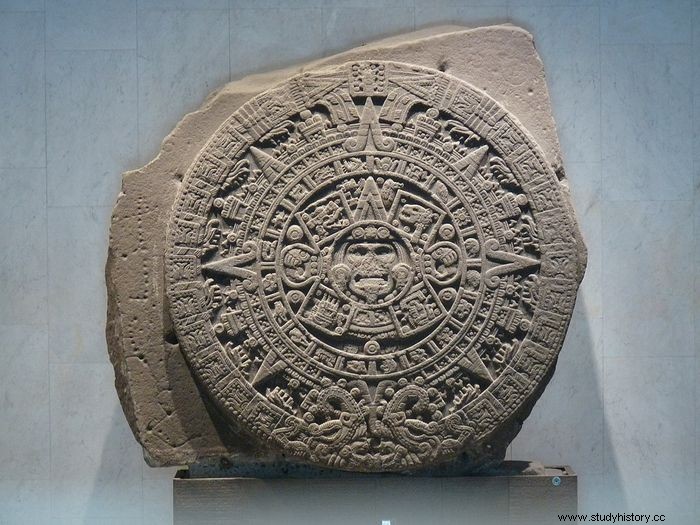
Millennialism, the idea that the world will cease at some point, seems to have dominated pre-Columbian societies. Because there is no way to disprove a religion after it has taken root, a human sacrifice is the only way to avert it. Their gods were terrifying animals whose rage was unquenchable. Their thirst died only through the use of blood, torture and sacrifice. Today, flagellation and other self-torture collide into a Christian liturgy unique to the Indian subcontinent.
Mesoamerican art and culture
Mesoamerican cultures are usually classified into three eras, each lasting from 1200 to 1580 AD
Pre-classical (1200–200 AD)
The Olmec civilization, which existed from 1200 to 400 BC, dominated this period. The Olmecs sculpted huge heads up to 8 feet high and shaped jade sculptures. In addition, the Olmecs began the Central American custom of building massive ceremonial structures.
Classic (200-900 AD)
The Maya ruled throughout this period and lived in vast agricultural towns, similar to the Mississippian cultures of North America, such as Natchez and Choctaw. They practiced their form of hieroglyphic writing as well as advanced astronomy. Rock carvings, a kind of rock art, some stone sculptures and wood carvings, and murals characterize the Mayan art.
Post-classical (900–1580 AD)
The Toltec civilization in the western area dominated this time (900-1300 AD), carving huge, block-like sculptures such as those used as free-standing columns in Tula, Mexico. Then there were the Mixtecs, whose primary Mexican civilization was active in pre-Aztec and post-Aztec eras. Its distinctive painting style with flat figures organized in geometric patterns covered all available areas. Aztec art includes high-colored frescoes, masks, ceremonial robes, bracelets and necklaces, and clay, stone and wood sculptures. In addition, there was decoration of masks and structures with Aztec mosaic art.
Architecture
Large ceremonial buildings, usually gathered in a ceremonial center complex, became fundamental to Central American civilization around 2000 BCE The most common style was a pyramid-shaped platform mound, similar to Egyptian pyramids, but ending in a flat top that led to one to four stairs, for performing ceremonial practices:see, for example, the Teotihuacan Pyramid (500 AD). In Mesoamerica, such pyramids served a ceremonial rather than a burial role and were essential for religious activities.
The wide square talud tableau in Mexico and the tall, narrow Mayan form were the two dominant architectural styles in Central America, especially evident in pyramid construction. Mayan architecture also includes corbel vaults, formed by overlapping, flat, balanced stones and used to build palaces and temples.
sculpture
In Central America, sculpture was the most popular art form. Figures and frees, varying in scale from enormous to minute, are important for the creative sense of the cultural tradition. Many temples and palaces have complete sculptures or friezes of snakes, skulls, growling jaguars and the gloomy rain god Tlaloc.
Natural variations in sculptural style occur over time and with different areas and civilizations. The Olmec civilization, for example, specialized in stone sculpture, making nine-foot-tall basalt heads depicting warriors or ball players, with the tallest weighing up to twenty tons. The beautiful, slender features of the Mayan sculptures or stucco figures, with their towering, complex headdresses, stand in stark contrast to their heavy, almost negroid appearance.
The plastic art of the Aztec Mexican civilizations created well-made sculptures of violent, violent creatures and animals and exceptionally lifelike representations of the rattlesnake, coyote and Jaguar, which ended in the 16th century with the Spanish invasion of the Aztecs.
Paintings
By the 1st century AD. The discovery of hieroglyphic writing took place in Central America. They were mostly engravings on memorial stems. More recently, there were painting activities of pictograms on strips of deer skin or bark cloth to make codices. It is the rare chronicle of the pre-Columbian people. There are three Mayan codes, as well as many others from Mexico. They include tribal stories, stories, aspects of daily life and exciting facts that Emperor Montezuma II's tribute to his subjects.
South American art and culture
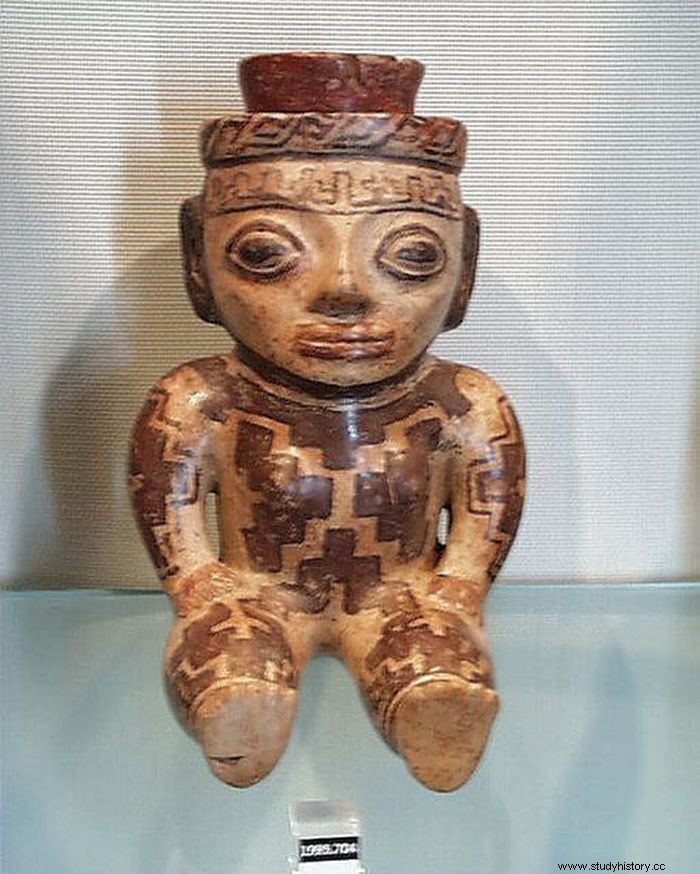
Archaeological monuments such as the famous Cueva de las Manos (Cave of the Hands) date back to about 7,300 BCE and show the earliest art in South America. The earliest established culture was the northern Chavin civilization, which existed from 1000-300 BCE in the Andean highlands (present-day Peru). The Tello obelisk, Lanzon and Raimondi Stela, excavated from its most important holy site Chavin de Huantar, are popular for their small-scale pottery, as well as the spectacular paintings, sculptures and other objects they contain. Moche (100-800 AD) replaced Chavin and is popular for his portrait vases, metallurgy and architecture.
Architecture
Stone or adobe (sludge bricks) were popular building materials. The former is found in the mountains. In contrast, the latter exist along the coast, where huge urban and defensive complexes formed from this material, such as Chan Chan, the capital of the Chimu coastal empire in northern Peru.
From 1000 BCE, the people of Peru built intricate temples and ceremonial complexes, especially at Chavin de Huantar in the northern highlands. The main temple platform has honeycomb mazes on at least three levels. The Incas built massive fortifications and are known for their architecture. There was no use of mortar, but each stone was accurately cut and had ideal seams.
sculpture
Fine sculpture, like buildings, dates back to about 1000 BCE with the Chavin civilization. At the intersection of the galleries at Chavin de Huantar, a large white granite monolith over 12 feet high was found in the center of the temple mound. There were carvings of condors with cat qualities or basic reliefs of felines with snake-like features on cornices. Around the same time, temple walls at Cerro Sechin on the Peruvian coast existed from monoliths with rich carvings with relief sculptures depicting warriors and their dead or divided prisoners. Much later, around 1200 AD, at Chan Chan, mud-plaster friezes on the temple walls depict absolutely stunning monsters with dragon-like appearances among seabirds and fish, emphasizing the importance of coastal economics.
Ceramics
Pottery production began around 1800 BC, and subsequent periods demonstrate enormous skill in this realm of applied art. Because the potter's wheel was not popular, people saw all visual forms by hand or from shapes. The stirrup bottle and its descendant, the whistle jar, were especially popular, typically painted with lifelike representations of humans and animals. Ceramics were one of the most important art forms for pre-Columbian artisans, as evidenced by the variety and liveliness of form and design. Around 400 AD. Mochica of the North Coastal Peru created vast quantities of skillfully cast pots, some depicting local officials and others depicting the people's many daily activities and occupations, from weaving to making love.
the conclusion
The pre-Columbian period on continental America is also the new world. People from Asia had first moved here and settled from Alaska to the southern tip of South America. This era diminished after the Europeans entered the continent and conquered the Indian civilizations.
